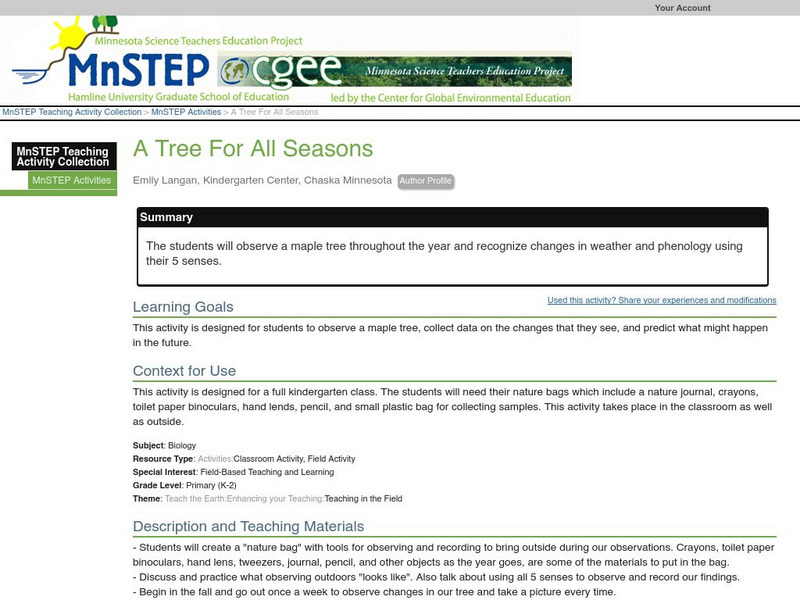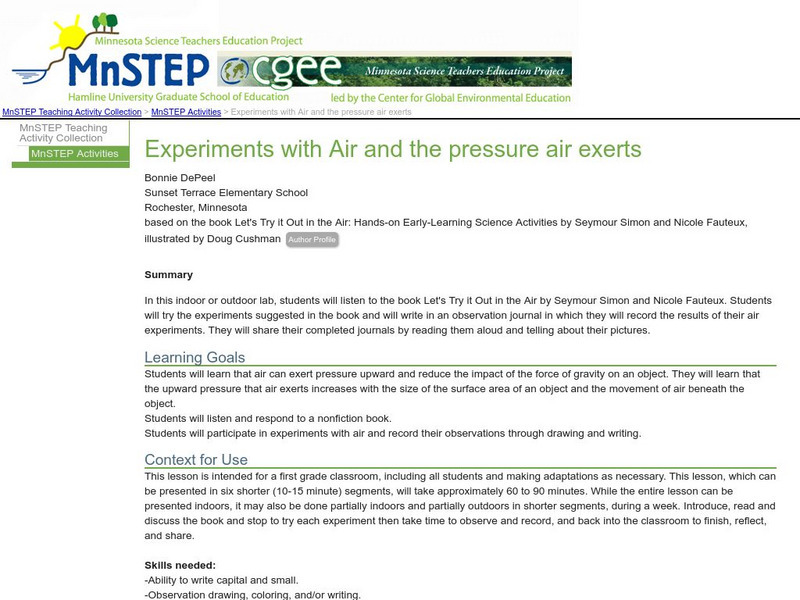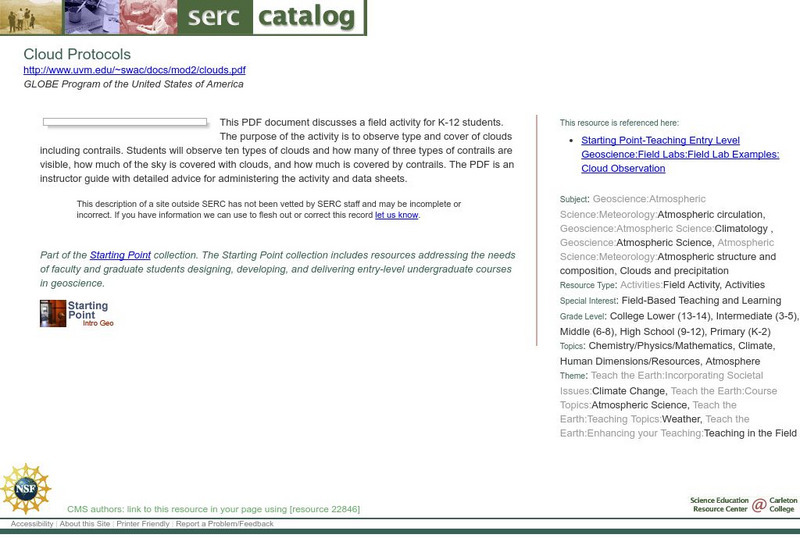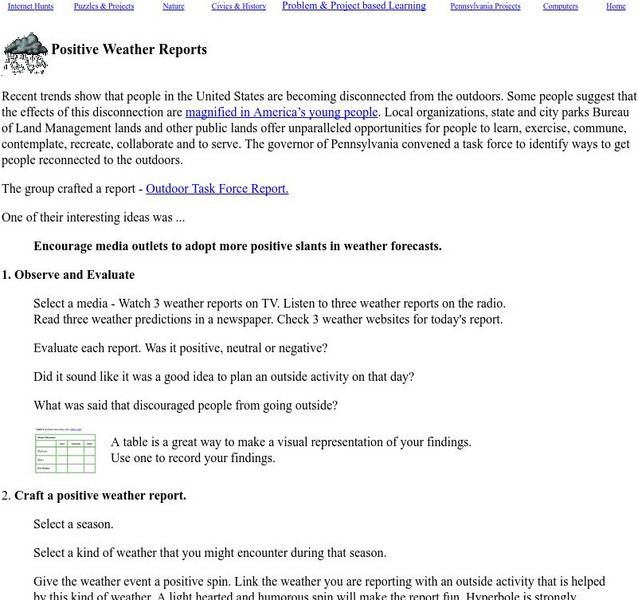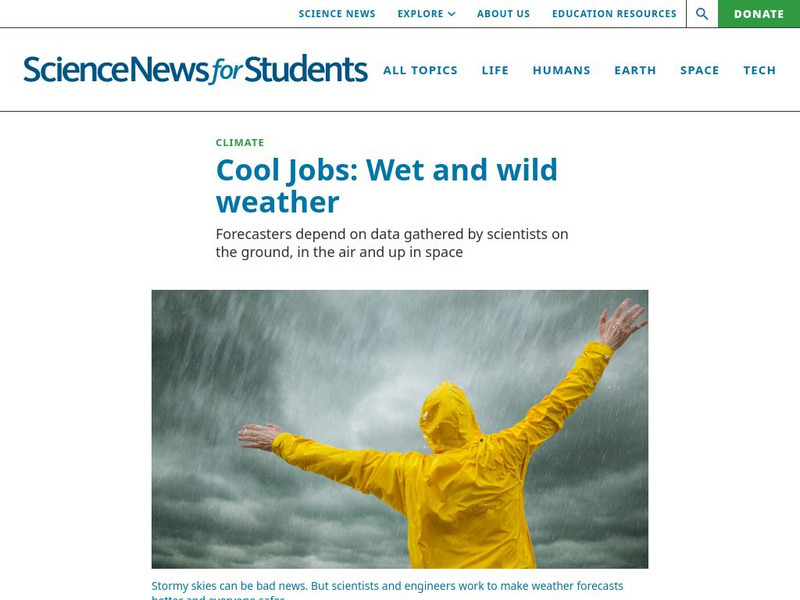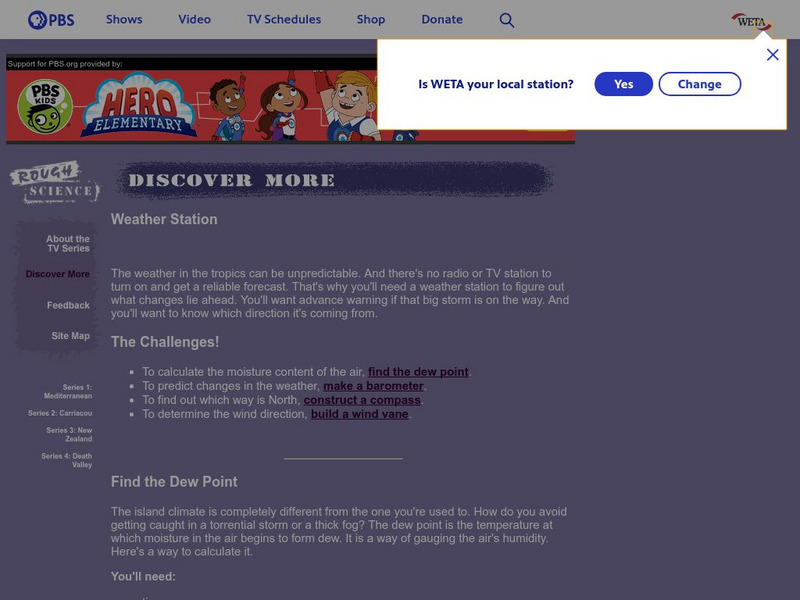Texas Instruments
Texas Instruments: Weather
This StudyCards stack enables students to review the vocabulary associated with weather.
Next.cc
Next: Climate
Complete these three activities to learn about climate, severe weather, and global warming. Includes links to explore related material.
Next.cc
Next: Rain
This activity provides an opportunity to learn about water vapor and its role in rain.
Next.cc
Next: Precipitation
Engage in the activities provided to learn what precipitation is and its many forms. Click on the links for further exploration.
Science Education Resource Center at Carleton College
Serc: A Tree for All Seasons
The young scholars will observe a maple tree throughout the year and recognize changes in weather and phenology using their 5 senses.
Science Education Resource Center at Carleton College
Serc: Investigating How Do Clouds Form? What Are the Different Types of Clouds?
For this investigation, students will observe and learn about the different types of clouds and be able to explain in their own words how clouds are formed. They will also observe an experiment illustrating how clouds form.
Science Education Resource Center at Carleton College
Serc: Experiments With Air and the Pressure Air Exerts
In this indoor or outdoor lab, students listen to the book Let's Try it Out in the Air. Then they have an opportunity to try the air experiments suggested in the book and write in an observation journal.
Science Education Resource Center at Carleton College
Serc: Measuring and Comparing Temperatures
Using thermometers, students will compare differences in the temperature of various materials and locations. They will record and chart the data that was collected and present the graphs to their classmates.
Science Education Resource Center at Carleton College
Serc: How Clouds Are Made
Introduce young learners to clouds and weather with guided discovery and inquiry to learn what makes up clouds.
Science Education Resource Center at Carleton College
Serc: Looking at Clouds: Identifying Cumulus, Cirrus and Stratus Clouds
Using photos of the three basic cloud types, small groups of young scholars will sort the clouds into 2-3 groups, list traits of each group, and name each cloud group. They will share their information on posters which are studied for...
Science Education Resource Center at Carleton College
Serc: Hands on Meteorology
A collection of interactive concept models and active learning materials for teaching meteorology that illustrate conceptually difficult processes in atmospheric science. Active learning exercises are provided as guided instruction to...
Science Education Resource Center at Carleton College
Serc: Cloud Protocols
Young scholars observe ten types of clouds and visible contrails, and determine how much of the sky is covered with clouds or contrails.
Museum of Science
Weather Tools
This site shows how to make weather tools for your own weather station. You can learn how to make a barometer, rain gauge, anemometer, wind scale tool, wind streamer, and wind chime.
Cynthia J. O'Hora
Mrs. O's House: Positive Weather Reports
After reviewing local weather reports, learners will think about whether the presentation of the reports is driving folks to not participate in outdoor activities. The class will create new weather reports that will turn negative weather...
English for Everyone
Reading Comprehension Assessment: "Summer Rain" [Pdf]
Read Theory provides a free reading comprehension assessment that is designed for students in the high school grades. Five multiple choice questions and three extended response questions are included on thia nonfiction reading assessment.
Math Science Nucleus
I. Science Ma Te: Integrating Science, Math and Technology
This site offers a wealth of online textbook-related materials that encourage the discovery of science in the world around us. Enter the site to access material on specific topics. Each section contains reading material (complete with...
Encyclopedia of Earth
Encyclopedia of Earth: Weather & Climate: Lightning
Explains what lightning is, how it is created, what happens inside thunderstorms, how lightning develops during a storm, types of lightning, how individuals and groups can stay safe, chances of being struck by lightning, and answers to...
Society for Science and the Public
Science News for Students: Cool Jobs: Wet and Wild Weather
How's the weather? Forecasts rely on scientists and engineers who collect and interpret data gathered on the ground, in the sky and way up in space.
TED Talks
Ted: Ted Ed: How Did Clouds Get Their Names?
Richard Hamblyn tells the history of Luke Howard, the man who classified the clouds and forever changed humanity's understanding of these changeable, mysterious objects. [5:07]
Dan Satterfield
Dan's Wild Weather Page: Precipitation
Find out about what causes precipitation and perform activities that teaches how precipitation forms.
Dan Satterfield
Dan's Wild Weather Page: Hurricanes
Use this site to find out about hurricanes and how to track them.
PBS
Pbs: Rough Science: Weather Station
PBS asks users to imagine that they are in the tropics and need to get a reliable weather forecast. It provides instructions on how to build a wind vane, construct a compass, make a barometer and find the dew point.
Climate Literacy
Clean: Mauna Loa Co2 Collection Data
This data-intensive activity uses real world datasets to cover topics such as weather v. climate, air circulation around the globe, seasonal effects, and climate change.
Other
Pete's Potpourri: Numerical Weather Prediction in Faq
This site discusses weather forecast computer modeling, or numerical weather prediction (NWP). It also discusses the development of the concept of front and air masses, as well as which computer forecast models are currently being used...




